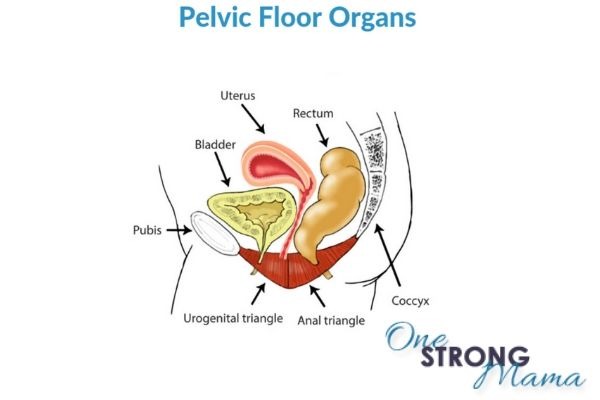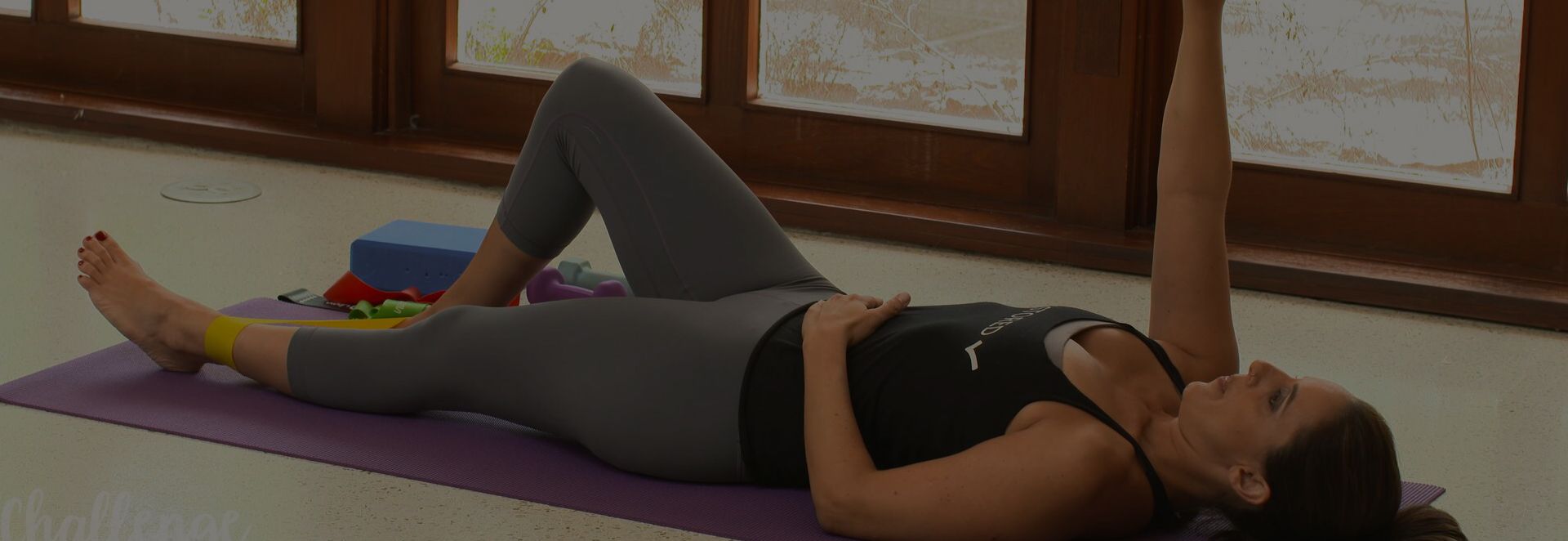Resources
- Understanding Pelvic Organ Prolapse: What You Need to Know
- Prolapse After Hysterectomy: A Comprehensive Guide to Risks and Prevention
- Can You Have Intercourse With Prolapsed Uterus?
- Understanding Prolapse After Childbirth
- I Healed My Prolapse: How Targeted Exercises Helped Me
- The Intersection of Prolapse & Weightlifting: What Athletes Should Know
- Hip Mobility and Prolapse: Connection & Exercises to Mitigate Prolapse Symptoms
- Effective Exercises for Relief and Recovery from Prolapsed Uterus
- Uterine Prolapse
- Rectal Prolapse
- How Common is a Prolapse After a Hysterectomy?
- How to Stop a Prolapse from Getting Worse
- Prolapse Surgery
- What is Cystocele?
- Rectocele Symptoms : The Signs of Rectocele Dysfunction

FREE video support with Lauren Ohayon
*No spam, just quality
content and support
Resources
- Understanding Pelvic Organ Prolapse: What You Need to Know
- Prolapse After Hysterectomy: A Comprehensive Guide to Risks and Prevention
- Can You Have Intercourse With Prolapsed Uterus?
- Understanding Prolapse After Childbirth
- I Healed My Prolapse: How Targeted Exercises Helped Me
- The Intersection of Prolapse & Weightlifting: What Athletes Should Know
- Hip Mobility and Prolapse: Connection & Exercises to Mitigate Prolapse Symptoms
- Effective Exercises for Relief and Recovery from Prolapsed Uterus
- Uterine Prolapse
- Rectal Prolapse
- How Common is a Prolapse After a Hysterectomy?
- How to Stop a Prolapse from Getting Worse
- Prolapse Surgery
- What is Cystocele?
- Rectocele Symptoms : The Signs of Rectocele Dysfunction
Rectocele Repair | Surgery or Exercise
By Lauren 07/27/2020
4 Min Read
Repair for a vaginal rectocele is pursued in order to correct the herniation or bulging of the bottom wall of the vagina. Symptoms of rectocele can become quite uncomfortable and painful over time. If left untreated, rectocele can lead to symptoms such as: the feeling of increased pressure or protrusion in the vagina or rectum, inability to defecate or feeling of incomplete emptying of the bowels, pelvic pain, and/or painful sex. Both non-surgical and surgical procedures for rectocele repair are only considered if symptoms become severe and inhibit daily life. Surgery for rectocele is typically performed transvagianally, yet, in some severe cases, may be completed both vaginally and abdominally.
Table of Contents
Why Do I Need Treatment for Rectocele?
Treatment for rectocele can greatly aid in managing and reducing symptoms of rectocele or other forms of pelvic organ prolapse. In some cases, rectocele and POP may be undetectable until the condition has progressed in severity. A small rectocele is often unrecognized until a doctor notices it during a physical examination. In many cases, rectocele occurs alongside other pelvic organ related conditions.
Treatment is designed to help reduce symptoms and heal any herniations, tears, or prolapses. Treatments include both surgical and non-surgical options. Although surgery for rectocele is often rare, in severe cases surgery may be your best option. Severe rectocele symptoms include:
- Bowels feeling full post defecation
- A noticeable bulge or protrusion in the vagina
- Inability to perform a bowel movement
- Rectal incontinence

Is Rectocele Repair Major Surgery?
Rectocele repair surgery is a major, out-patient surgery. A doctor will typically only recommend surgery for rectocele if at home exercise programs and / or physical therapy has not resolved the problem. The surgical procedure for rectocele removal is called posterior colporrhaphy which removes the herniated bowel from the wall of the vagina. Rectocele surgery is designed to:
- Ease pain and discomfort
- Minimally invasive transvaginal procedure
- Outpatient (usually released without needing overnight stay)
- Quick recovery time (2-3 weeks or less on average)
What is a Rectocele Repair Procedure?
The procedure for rectocele repair surgery is typically a straightforward process. The surgery is often performed through the vagina (transvagianlly.. The procedure is typically performed by a surgeon making a small incision along the posterior vaginal wall. Excess tissue along the herniation is removed and stitches are sewn around the tear sight. If the doctor notices any other forms of pelvic organ prolapse, he may resolve those issues as well during the procedure. Once complete, the vaginal incisions are stitched up and packed with gauze. Please speak with your doctor for more information on this process.
Post-Op Rectocele Repair
Post operation there are a few things that may occur. The most common symptoms post rectocele surgery is slight pelvic and rectal discomfort and pressure, as well as slight vaginal bleeding, and minimal pain during bowel movements. These symptoms typically resolve in a couple weeks once the tissues have healed. Please speak with your doctor for more information on post-op expectations.
Rectocele surgery is usually successful and helps resolve the symptoms in nearly all patients.
Rectocele Surgery Recovery Time
Recovery for rectocele is usually quick and has minimal risks during recovery. The incisions made at the repair sight will typically heal in approximately 2 to 3 weeks. Please speak with your doctor for more information on recovery expectations.
Post-operation, you should be able to move about, carefully, within a few hours after your surgery. You may be prescribed some pain medication to help relieve any discomfort during your recovery. You should abstain from any physical exercise and sex until after 6 to 8 weeks post-op. Please speak with your doctor for more information on post-op instructions. There will typically be a follow-up appointment required within the final 4 – 6 weeks after your surgery.
What are the Risks of Rectocele Surgery?
Although uncommon, there are a few risks with rectocele surgery. These can include:
- Failure to repair a rectocele or recurrence
- Potential blood clots due to surgery
- Infection
- Post-op bleeding
- Injury to other vital organs or rectum
- Anesthesia issues (allergic reaction)
- Sex related issues due to improper healing on the vaginal tissues

Can you Fix a Rectocele Without Surgery?
Often, yes. As with many forms of pelvic floor prolapse, rectocele is treatable without the need of surgery. Various forms of exercise, pelvic floor therapy, dietary restrictions or additions, staying hydrated, and practicing proper core and pelvic floor engagement techniques are highly beneficial for treating rectocele. Surgical procedures should always be a last resort when dealing with core or pelvic floor related issues. Some of the best advice I give to my clients regarding their health includes practicing proper breathing mechanics and good posture as well as learning how to have a reflexive core and pelvic floor to support their daily activities.

Good Practices for Pelvic Organ Prolapse (POP)
A few of the techniques and practices I cover in my program Restore Your Core include:
Proper Breathing Mechanics:
I teach my clients in RYC how to breathe 3-dimensionally. This means that as you inhale, you use your ribcage to accommodate air as it enters your body. Think of it like this: breathing in air creates a shape change in your body. You can change shape by pushing your belly out and increasing pressure, or you can change shape by allowing your ribcage to expand to make space for your lungs. Doing the latter allows your body to properly engage and respond to the demands of daily life.
Your pelvic floor function is closely related to your core function. So, when I am working with my clients to resolve any pelvic floor issues (i.e. rectocele), I am essentially addressing their core issues as well. Belly breathing does not only affect your pelvic floor, but also significantly impacts core function.
Posture: Pelvic Alignment and Reducing Abdominal Pressure:
Our posture and how effectively we use our bodies in our daily activities significantly impacts our overall core and pelvic floor health. Not only that, but our posture can also greatly affect our joints, muscles, and bone health. When it comes to working with my clients on their rectocele, I always ensure part of their treatment involves restoring and healing their pelvic floor function. An unintentional mistake many women make when standing upright is shifting their weight forward in their hips. Think of the hips leaning forward. This shift can actually increase tension in the muscles of the pelvic floor leading to varying types of POP. In the process of resolving pelvic alignment, I might work on hamstrings, upper back mobility, glute function, pelvic mobility and more. Resolving pelvic floor issues requires us to view the pelvic floor as a part of an entire system and therefore requires a whole-body approach. The process of learning how to align your body to better support you while you stand takes time, but is well worth the process. And your pelvic floor will thank you for it! Better alignment = less pelvic floor tension and pressure.
Now that you know that rectocele can be treated without the need of surgery, it may be time to learn more about how to use exercise to heal your pelvic floor. My 13 Week Program: Restore Your Core offers a step by step approach to developing a strong, healthy, responsive core & pelvic floor system, for the health of your whole body.



